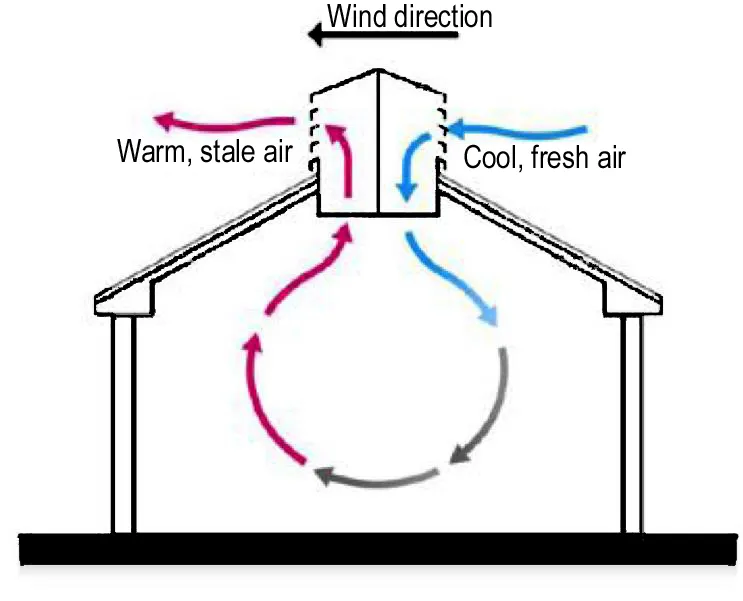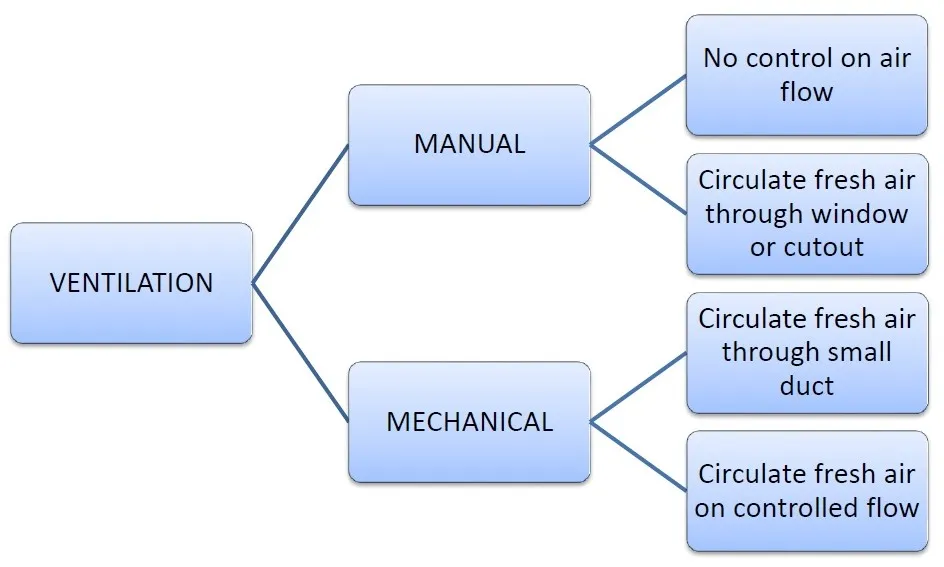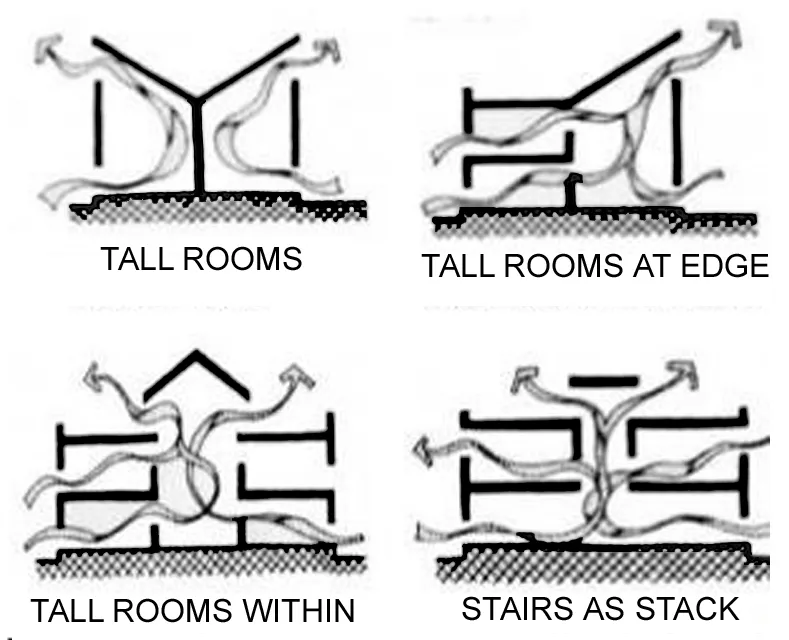If you want to know about the vastu for internal planning of house or design guidelines for natural ventilation or natural ventilation and air movement concept site climate, please click the link.
Ventilation in buildings refers to the process of providing fresh air to indoor spaces and removing stale air, odors, and contaminants. Good ventilation is important for maintaining healthy indoor air quality, reducing the risk of respiratory illnesses, and preventing the buildup of harmful gases, such as carbon monoxide.
1) Functions of ventilations
The three main functions of ventilations are for: –

- The supply of fresh air
- Maintain cooling effect for comfort conditions.
- Removing heat from the thermal mass in the building structure ( we will concentrate on night time cooling).
2) The supply of fresh air
Fresh air is required in buildings to: –
- Provide sufficient oxygen
- Dilute odors
- Dilute to acceptable levels of carbon dioxide produced by occupants & combustion.
3) Types of ventilation

4) Heat balance in building

5) Nighttime cooling of the building

- Night cooling refers to the operation of natural ventilation at night in order to purge excess heat and cool the building fabric.
- A building with sufficient thermal mass, which can be exposed to night time ventilation:-
- It can reduce peak daytime temperatures by 2° to 3° using this strategy.
6) Wind and temperature effect
Light or heavyweight structure?
- Air moves from high pressure to low pressure.
- Light weight building track external temperatures more closely than heavyweight buildings.
- Outdoor mean maximum temp. are greater than 34 deg. In july .
Light weight structure is:
- Well insulated roof
- No direct solar gain
- Ventilation path trough the building are effective
i) Wind effect
- Wind pressure on a building depends on wind direction, speed & the shape of the building.
ii) Temperature effect
Temperature differences between indoors & outdoors causes density differences in the air which in turn causes pressure differences (as hot air rises).
- Stack pressure can be calculated
- Ps=0.042XhXT
- Ps= stack pressure
- H= Height of stack
- T= Temperature difference
7) Ventilations
There are four main ways in which buildings are naturally ventilated: –
- Single sided ventilation
- Cross ventilation
- Stack effect
- Reverse stack effect
i) Single sided ventilations
- It occurs when large ventilation openings, such as doors & windows are situated on one external wall only.
ii) Cross ventilations

- It occurs when inflow & outflow openings in external walls have an internal flow path between them.
- Flow characteristics are determined by the combined effect of wind & temperature differences.
iii) Stack ventilations

Proper ventilation design depends on various factors, including the building size, occupancy, and usage, as well as the local climate and air quality conditions. In addition, building codes and standards typically mandate minimum ventilation rates and requirements to ensure a healthy and safe indoor environment.